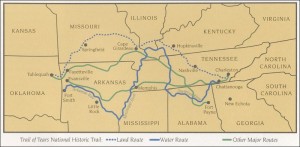By Hannah Urano
Copy Editor
Health and human kinetics courses are integrating new technology into their classes, allowing students to get first-hand experience with fitness and health monitoring wristbands.
In the Exercise Perception course, taught by Nancy Knop, students were split into groups of four and given two bracelets to use throughout the assignment.
According to Knop, each student gathered at least two days of their own data, and will later use it to examine trends, and subsequently share their data with fellow students.
“Students will have the opportunity to research all devices relative to marketing, intended purposes, nature of the device, connectivity of the devise to different apps, embedded logic for motivation for client (i.e. notices that you have not moved in the last hour), ease of use, cost and so on,” she said.
Junior Krisite Prendergast said the goal of the assignment was to “research fitness applications and also fitness devices to find what they do, what they track and their strengths and weaknesses so we can compare them to see which is the best device out there.”
Prendergast said she used the Jawbone UP bracelet, which tracked “pretty much everything.”
The unisex wristbands come in an assortment of colors and look inconspicuous on the wearer.
According to the Jawbone website, “UP is a system that that takes a holistic approach to a healthy lifestyle. The wristband tracks your movement and sleep in the background. The app displays your data, lets you add things like meals and mood and delivers insights the keep you moving forward.”
Prendergast said her wristband had a battery life of ten days and was water resistant.
“It will tell you how long you were active or sedentary, how many miles you walked and how many calories you burned,” she said.
According the Prendergast, the most impressive aspect of the wristband was that it could track sleep.
“It keeps track of how long it took you to fall asleep, how many times you woke up, and how many hours you were in light or deep sleep,” she said. “On top of that, the bracelet is set so that it can wake you up at the best time in the morning or from an afternoon nap.”
Senior Casey Helms is also taking Exercise Perception. Helms used the FitBit Flex, which has similar features to the Jawbone UP.
“FitBit Flex has so many great features; these include tracking steps, distance travelled, minutes of intense activity and calories burned,” he said. “It even has a vibrating alarm that I used every night to wake me up in the morning. The best part is, these bands sync with a smartphone wirelessly via the Bluetooth feature. Having the bracelet on is a great way to stay motivated and aware of daily physical activity.”
Based on her personal results, Prendergast said she was surprised to learn how many steps she takes in a day.
“I always thought I was pretty sedentary throughout the day because of classes, but I never realized how much I actually did walk from when I go to class, in between classes or at soccer,” she said. “It was surprising to see that I walked over 12,000 steps a day.”
According to Helms, it is recommended that individuals get at least 10,000 steps per day to improve bone health and reduce the risk for many diseases.
Like Prendergast, Helms said he exceeded this amount, but said he initially believed his number should have been even higher since he exercises for several hours each day.
“However, I thought about it and it makes sense considering as students, we attend several hours of classes daily, as well as spend significant time doing homework,” he said.
Both Helms and Prendergast agreed that this technology could be useful in everyday life and that the benefits are applicable to the average person.
“From a de-conditioned person to a health-conscious athlete, this bracelet can show people what their health behaviors are and can help motivate them to live a less sedentary lifestyle,” Prendergast said. “For me, since I knew the bracelet was counting my steps, it motivated me to move more throughout the day.”
Knop said some brands of trackers will provide better information for specific populations and she wanted her students to consider how the information gathered from these devices might increase a person’s awareness of their behaviors.
“Consider how the awareness might then lead to increased motivation to change a behavior and then support the changed behavior,” she said.
Knop also said that there is a possibility of becoming “too measured, getting too much information, not relying on your own sensibilities to determine if you need to get up and move, or becoming too dependent on monitoring systems.”
Health and human kinetics professor Christopher Fink said his Sport and Exercise Nutrition class will be using similar trackers for different purposes later in the semester.
“We will be using the trackers to examine individual energy needs, and to compare to both hand-calculated metabolic estimates of energy requirement and also to various apps and software that estimate energy needs based on self-reported activity levels,” he said.
Prendergast said she enjoyed learning about this new technology.
“I think this technology is an excellent way for anyone to make a behavior change, whether their diet, physical activity level, or sleep,” she said. “I also like that you can set your own goals so a person can get healthy on their own pace.”
